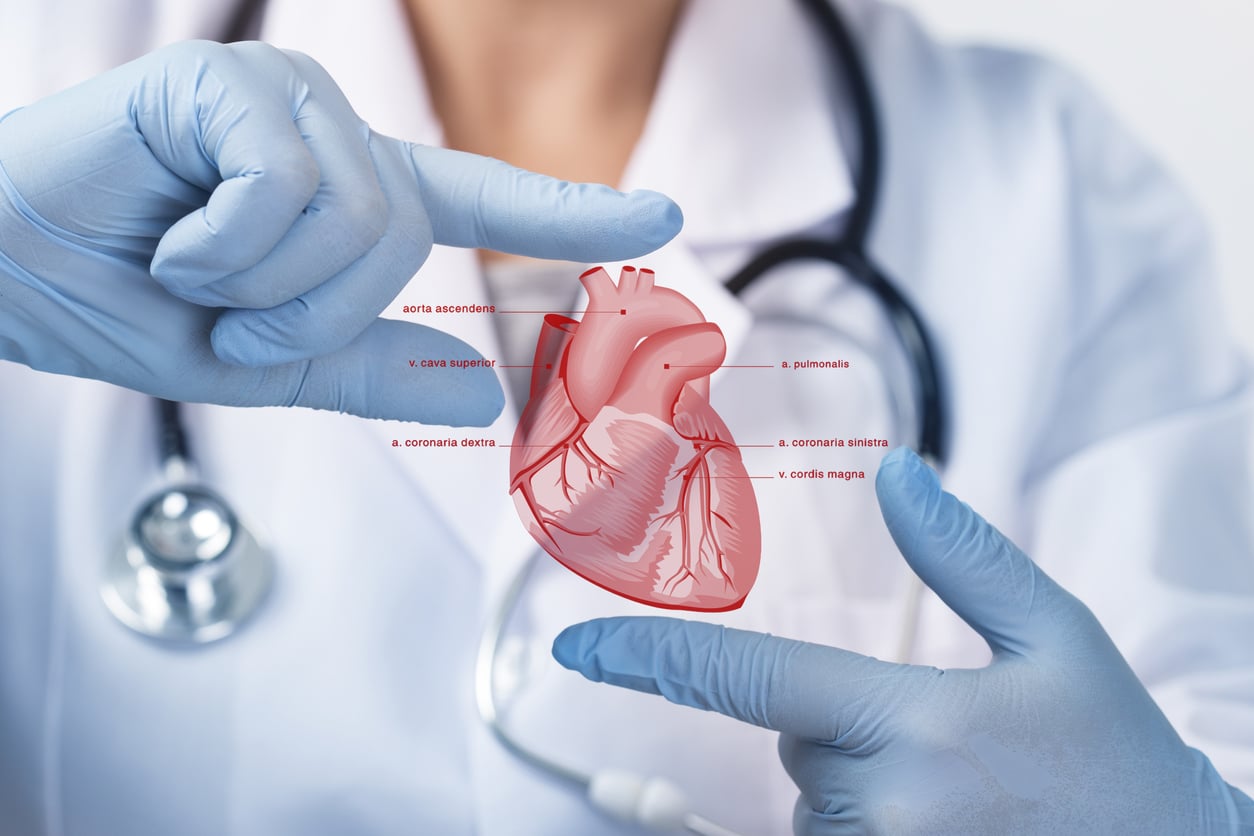Your complete guide to Cardiology: Understanding everything heart-related
Your complete guide to Cardiology: Understanding everything heart-related
Blog Article
Comprehending the Significance of Cardiology in Modern Health Care Solutions
Cardiology plays a vital role in contemporary healthcare, specifically as cardiovascular disease proceeds to be the leading root cause of mortality worldwide. Advances in diagnostics and therapy have changed patient care, making it possible for earlier treatments and boosted results. The shift in the direction of preventative cardiology empowers individuals to handle their health and wellness proactively. As innovation continues to advance, the combination of innovative services may even more redefine cardiology's influence on public wellness, motivating a better assessment of emerging patterns and their implications.
The Frequency of Heart Condition and Its Effect On Public Wellness
Heart illness continues to be the leading cause of death around the world, its influence extends much beyond specific people to impact public health and wellness systems and economies. The high occurrence of cardiovascular disease positions a considerable pressure on health care resources, necessitating boosted financing for treatment, recovery, and avoidance programs. Public health initiatives need to address risk aspects such as obesity, smoking, and inactive lifestyles, which contribute substantially to the rising incidence of heart conditions.Moreover, the financial concern connected with cardiovascular disease is enormous, encompassing not just straight medical prices but likewise indirect expenditures associated with lost performance and early mortality. Neighborhoods encounter difficulties in managing these expenses, usually resulting in disparities in health care accessibility and end results. As the population ages and lifestyle-related dangers remain to rise, the necessity for effective cardiology interventions becomes paramount. Subsequently, resolving heart problem is not just an issue of individual health and wellness but also an essential public health concern.
Advancements in Cardiac Diagnostics and Imaging Techniques
Recent improvements in cardiac diagnostics and imaging methods have actually transformed the field of cardiology, enhancing the capability to keep an eye on and spot heart problem. Strategies such as heart MRI, CT angiography, and echocardiography have actually become progressively advanced, supplying in-depth photos of cardiac structures and functions. These techniques enable the early identification of conditions like coronary artery disease, cardiac arrest, and valvular disorders.Moreover, developments in non-invasive diagnostics, such as wearable modern technology and remote monitoring tools, have actually encouraged patients and health care carriers. These tools help with real-time monitoring of heart rhythms and various other important indicators, resulting in prompt interventions. Additionally, expert system is being integrated right into imaging evaluation, boosting precision and performance in diagnosis.
Developments in Treatment Alternatives for Heart Issues
Current improvements in cardiology have resulted in considerable developments in treatment alternatives for heart disease. These consist of advanced medical methods that improve step-by-step results and emerging drugs that provide new opportunities for treatment. As the field advances, these technologies play an essential function in boosting client care and outcomes.
Advanced Surgical Techniques
Developments in surgical techniques have actually transformed the landscape of cardiology, providing new expect people with heart conditions. Minimally intrusive procedures, such as catheter-based treatments, have greatly minimized healing times and healthcare facility keeps. Techniques like robotic-assisted surgical procedure improve precision, allowing cosmetic surgeons to navigate intricate physiological structures with higher accuracy. Innovations in imaging technology help with real-time visualization during procedures, improving outcomes. Transcatheter aortic shutoff replacement (TAVR) exemplifies a breakthrough in treating aortic stenosis, allowing valve substitute without open-heart surgical procedure. Furthermore, hybrid techniques that combine surgical and catheter-based techniques offer customized solutions for various cardiac issues. These sophisticated surgical techniques not just boost person safety and security however additionally increase therapy alternatives, underscoring the crucial role of advancement in modern cardiology techniques.
Arising Treatments and drugs
As the landscape of cardiology remains to advance, arising therapies and medications play a critical role in boosting treatment choices for heart disease. Advancements such as novel anticoagulants and advanced lipid-lowering agents have changed the management of heart diseases, substantially minimizing patient morbidity and mortality. Additionally, the advancement of gene therapies and regenerative medicine uses appealing methods for dealing with problems previously considered permanent. Scientific tests are constantly exposing the effectiveness of these treatments, pressing the limits of typical therapies. The integration of electronic wellness innovations assists in personalized medication, permitting for tailored treatment strategies based on hereditary and way of living variables. Jointly, these advancements underscore the dynamic nature of cardiology, boosting client outcomes and redefining standards of treatment in contemporary medical care.
The Role of Preventive Cardiology in Individual Treatment
Preventive cardiology plays an important duty in individual treatment by concentrating on the recognition of threat variables that add to heart problem. Through way of living modification strategies and very early detection strategies, doctor can properly minimize the occurrence of cardiovascular occasions - Cardiology. This proactive method not only enhances client outcomes yet additionally advertises long-term wellness
Threat Factor Recognition
While heart diseases remain a leading source of morbidity and death worldwide, effective danger variable identification offers as a cornerstone of precautionary cardiology. Determining danger factors such as hypertension, diabetic issues, hyperlipidemia, and household background is crucial for very early intervention. Health care specialists use various evaluating approaches to review these aspects, enabling customized safety nets. Furthermore, comprehending an individual's way of living choices, such as smoking and physical inactivity, even more informs risk assessments. This extensive analysis allows clinicians to create personalized care strategies aimed at mitigating threats. By focusing on danger element recognition, healthcare systems Going Here can improve individual end results and decrease the total worry of heart diseases, eventually adding to improved public health and wellness approaches and source allotment.
Way Of Living Modification Strategies
A wide range of studies highlights the vital function of way of life alteration approaches in reducing cardiovascular illness danger. These strategies encompass nutritional adjustments, raised exercise, smoking cessation, and weight management. By taking on a heart-healthy diet rich in fruits, veggies, entire grains, and lean healthy proteins, individuals can decrease cholesterol levels and blood pressure. Regular physical activity strengthens the heart and boosts total cardio health. In addition, giving up smoking greatly decreases the risk of cardiovascular disease and boosts recovery rates for those with status quo. Weight monitoring better adds to cardiovascular health by minimizing various other threat elements such as diabetes mellitus and high blood pressure. Executing these way of living changes not only promotes specific well-being yet additionally functions as a cornerstone of precautionary cardiology in client treatment.
Early Detection Methods
Lifestyle adjustments considerably add to minimizing heart disease risks, however they are most efficient when coupled with early discovery techniques. Precautionary cardiology stresses the value of identifying prospective heart problems before they escalate into significant conditions. Strategies such as blood pressure monitoring, cholesterol testing, and advanced imaging technologies like echocardiograms play vital roles in examining cardiovascular wellness. Biomarkers and genetic testing also enhance the precision of very early discovery, permitting tailored preventive methods. Routine heart risk assessments empower doctor to intervene proactively, possibly preventing heart attacks and strokes (Cardiologist near me). By integrating these very early discovery techniques right into regular care, clients can profit from timely lifestyle treatments and targeted therapies, ultimately enhancing results and boosting lifestyle
Integrating Modern Technology Into Cardiology Practices
As advancements in technology remain to reshape different areas, the assimilation of cutting-edge tools and systems into cardiology practices has ended up being necessary for boosting client treatment and outcomes. Telemedicine platforms permit cardiologists to keep track of clients remotely, enhancing access to care while minimizing the problem on medical care centers. Wearable tools, such as smartwatches, make it possible for continual heart price surveillance, alerting both medical professionals and individuals to possible Click This Link concerns in real-time. In addition, expert system (AI) is being utilized to analyze vast quantities of heart information, helping in early medical diagnosis and tailored therapy strategies. Advanced imaging methods, including 3D echocardiography, boost visualization of heart frameworks, causing a lot more accurate interventions. Digital wellness records (EHRs) streamline patient details monitoring, making sure that cardiologists have instant accessibility to vital data. Together, these technical improvements are transforming cardiology, promoting aggressive administration and improved wellness results for clients with cardio conditions.
The Significance of Patient Education And Learning and Engagement
Individual education and involvement play a pivotal function in the monitoring of cardiovascular health and wellness. By equipping individuals with expertise regarding their problems, treatment choices, and way of living changes, health care suppliers empower individuals to take an active role in their care. This proactive technique can lead to improved adherence to recommended drugs, dietary adjustments, and exercise programs, eventually reducing the threat of complications.Engagement likewise cultivates a solid patient-provider relationship, encouraging open communication and depend on. When individuals really feel educated and entailed, they are more likely to voice issues and ask concerns, which can cause far better clinical outcomes. Additionally, educational resources, such as workshops or digital platforms, can enhance understanding and promote self-management techniques. In general, prioritizing individual education and interaction is necessary for improving cardiovascular health and wellness, enhancing high quality of life, and decreasing health care costs related to cardiovascular diseases.
Future Patterns in Cardiology and Their Possible Influence

Regularly Asked Inquiries
What Way Of Living Modifications Can Minimize Cardiovascular Disease Risk?
The existing concern addresses lifestyle changes that can substantially minimize heart problem threat. Cardiologist near me. Taking on a balanced diet regimen, taking part in regular exercise, preserving a healthy weight, taking care of tension, and staying clear of tobacco can especially enhance cardio health and wellness
How Can I Acknowledge Early Indicators of Heart Problems?
Identifying early indicators of heart problems includes monitoring signs such as chest discomfort, lack of breath, tiredness, and uneven heartbeat. Prompt recognition of these signs can motivate required clinical assessment and treatment for better results.
What Are the Distinctions Between Cardiologists and Heart Surgeons?
The differences in between cardiologists and heart cosmetic surgeons lie in their functions; cardiologists primarily identify and take care of heart problems through non-invasive techniques, while cardiac specialists perform operations to fix architectural heart concerns. Each plays an essential, distinctive function.

Just how Usually Should I Obtain My Heart Health And Wellness Checked?
The frequency of heart medical examination differs based on specific danger elements. Generally, grownups ought to undergo analyses every one to two years, while those with status quo might need even more regular assessments as suggested by health care professionals.
What Function Does Genetics Play in Heart Condition Risk?
Genes considerably influences heart condition risk, with domestic patterns indicating acquired conditions. Details genes can incline individuals to high blood pressure, cholesterol issues, and various other cardiovascular troubles, highlighting the significance of hereditary screening in examining heart health. Heart illness continues to be the leading cause of fatality globally, its influence extends far past individual clients to influence public health and wellness systems and economic situations. Public health efforts must deal with threat factors such as weight problems, smoking cigarettes, and sedentary way of lives, which add greatly to the increasing occurrence of heart conditions.Moreover, the financial burden associated with heart illness is tremendous, encompassing not only direct clinical prices yet also indirect costs associated to shed performance and premature mortality. Precautionary cardiology plays an essential role in client care by concentrating on the recognition of threat variables that add to heart disease. Synthetic intelligence (AI) and device discovering are improving diagnostics and person surveillance, enabling early detection of heart diseases. The differences between cardiologists and heart specialists exist in their functions; cardiologists mostly identify and handle heart conditions through non-invasive methods, while cardiac surgeons perform surgical treatments to deal with architectural heart problems.
Report this page